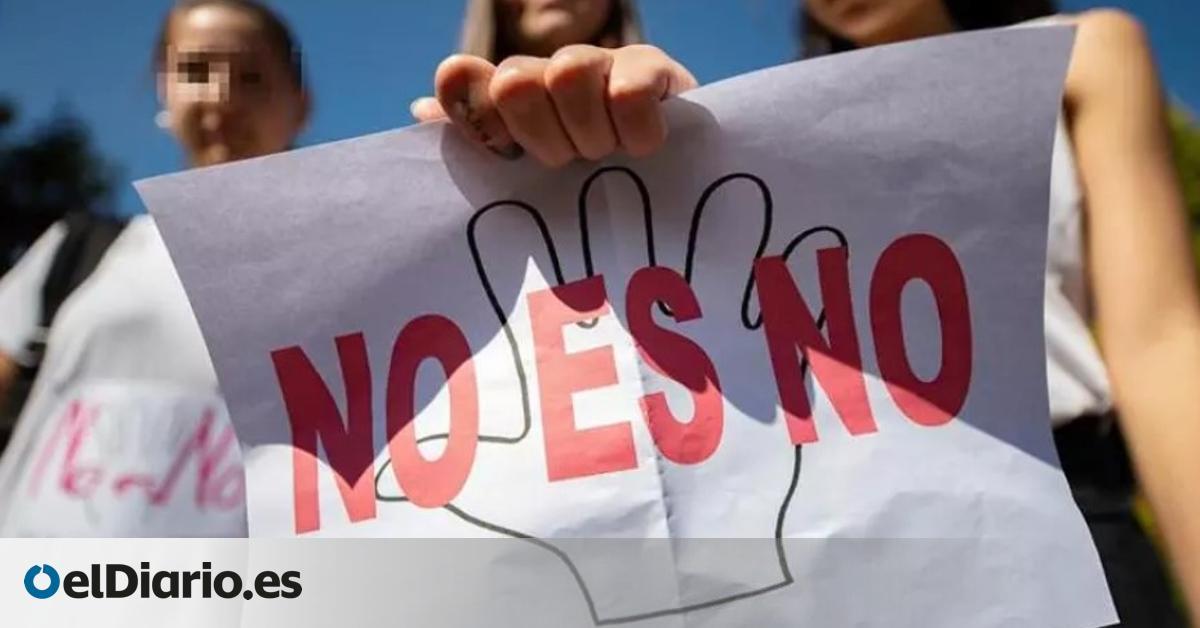
There is an image that is often used to talk about sexist violence: that of an iceberg with a tip that protrudes to the surface and a huge base that remains submerged. Although the iceberg is still an apt metaphor, the truth is that in the last decade the mass of ice that has emerged has grown larger. Complaints of sexual violence have doubled in just ten years: from the 9,000 registered in 2012 to 17,389 in 2022, according to data contained in the Ministry of the Interior’s crime reports.
If the extreme right used these data to alarm during the electoral campaign, the experts, however, stress that these figures are, in some way, an achievement: it is not so much that there is more sexual violence as that women now speak and they denounce more. Institutions and society accompany. The social climate has undergone a historic change.
What has happened in this decade? Bárbara Tardón is one of the specialists who has spent the longest years studying sexual violence and working with victims. “Sexual violence has gone from being completely hidden to being visible in the feminist narrative, in media narratives, in institutions,” she says.
Sexual violence has gone from being completely hidden to being visible in the feminist story, in media stories, in institutions
Barbara Tardon
— PhD in Intergenerational Studies from the UAM
In her thesis, she assures that at the beginning of the 2000s the story, also in the feminist movement, was focused on gender violence by couples or ex-partners. “It grabbed all the attention, the political subject was the victim of gender violence in the couple or ex-partner, for this reason, among other things, there have been no resources in Spain to care for victims of sexual violence.” 2004 was the year in which the gender violence law was approved.
However, as the years go by something happens. Tardón mentions some of the factors that led to a change of scenery: “A feminist movement that arrives in Spain and has been brewing for years. In the media, there is also a group of feminist journalists who are beginning to put sexual violence on the agenda.” The turning point is in 2016. On July 7, a young woman denounces five men for sexual assault during the Sanfermines festivities. The case of ‘the herd’ becomes the definitive catalyst. “The feminist mobilizations around the case were crucial to make it visible, to say ‘enough is enough,’” says Tardón. At the same time, MeToo explodes in the United States and causes a wave that was already permeating Spain.
The spigot was turned: thousands of women began to share their own stories. “It is when you talk about something that you begin to situate it, to understand what is happening and to file a complaint,” says Bárbara Tardón. In 2018, Amnesty International published the first report that indicated the State’s neglect of sexual violence. The NGO denounced the lack of public policies, the absence of protocols and specialized centers for victims of sexual violence in half of the autonomous communities. The breaking of the silence, the feminist mobilization and the pointing out that the administrations neglected made sexual violence fully enter the political agenda.
More information, more resources
The lawyer specializing in sexual violence Laia Serra is clear that a social climate has been created in which it is easier to speak up and, therefore, come to denounce. “The social perception of what violence is in general and sexual violence in particular has grown. The feminist discourse of breaking the silence and the stigma has allowed there to be more identification of the violence that is suffered, that there is a personal process of self-legitimization to go and denounce ”, she explains. Both Serra and Tardón underline that the commitment of many institutions when it comes to implementing policies and resources has been key for women to trust more in taking the step of denouncing and feel more supported.
The feminist discourse of breaking the silence and stigma has allowed for more identification of the violence suffered
Laia Serra
— Lawyer specializing in sexual violence
The coalition government between the PSOE and Unidas Podemos established in its alliance pact a point on feminist policies and the fight against sexist violence. The Ministry of Equality got down to work and drafted a sexual freedom law that, beyond the penal changes, builds a framework of attention, resources and aid similar to the one that the law on gender violence raised for those who suffered violence by part of your partner or ex-partner.
The rule, already in place, requires, for example, that all provinces have 24-hour care centers and that sexual violence be judged in specialized courts. As is the case with victims of gender violence, those of sexual violence can also access financial aid equivalent to six months of unemployment benefits if they earn less than the minimum wage and have priority access to the public housing stock.
Laia Serra notes the difference between the women who come to her: “They have more information than before about resources or about what to do, for example, that it is important not to shower. They better identify what is happening to them, behaviors that would not have been reported before are reported, such as touching by a driving school teacher or in a gym sauna. Before it was unthinkable that the judicial system would have dealt with these daily violence of different intensity, they had no place”. Women, adds the lawyer, are also more aware of what surrounds a process of sexual violence: the battle of credibility, blame, stigma…
“It is a social achievement because part of the inhibition in denouncing had to do with the social toll that had to be paid. Now you get to talk with your family, at school…they themselves ask to be believed, and there is more social legitimacy, ”she says. For her part, Bárbara Tardón looks back to remember that at the beginning of the 2000s, information barely existed, and sexual violence had no space in the media. “Everything was so hidden that the victims did not feel socially and institutionally supported to take such an important step as filing a complaint.”
a hidden number
Despite this unprecedented breaking of silence around sexual violence, statistics still show that only a small part is reported. The last Macro Survey of Violence against Women published by the Ministry of Equality in 2020 showed that 13.7% of women have suffered sexual assaults. 2.2% have been raped at some point in their lives. Only 8% of women who suffer sexual violence denounce. The survey delves into the reasons: in the case of rapes, 40.3% did not do it out of shame, 40.2% because they were minors, 36.5% reported fear of not being believed as main reason for not reporting, and 23.5%, fear of the aggressor. The reason most frequently mentioned by women for not going to court in the case of sexual violence in general is that they were minors, followed by the fact that they did not attach sufficient importance to it.
The criminal route is not the only possible one. There are those who follow other paths to recover and repair
Laura Macaya
— Direct care expert
The expert in direct attention and design of public policies on gender violence with an intersectional feminist perspective, Laura Macaya, is critical of the way in which this submerged figure is sometimes presented: “It makes one think that the judicial and criminal path is the only possible of approach, implies that whoever does not report does nothing and it is not so. Sometimes there are those who follow other paths to recover and repair, to empower and get out of that situation through other paths. Macaya believes that favoring complaints cannot be the only message if access to justice systems is not improved, re-victimization is avoided, the prejudice framework is reviewed, or the performance of justice personnel and law enforcement is evaluated. security. The expert recalls that not all women can access these systems under equal conditions and that questioning or even criminalization can become serious in the case of black women, women in an irregular situation or women engaged in prostitution , “those that the system does not protect in the same way”.
The expert notes that both she and other colleagues who work accompanying gender and sexual violence perceive greater awareness “and a denormalization” of some behaviors and situations, “favored by the visibility and popularization of feminist discourses”, which have favored a “sexual empowerment” in the area of the couple or with known men, although that, the area of personal relationships, continues to be, she says, a space still full of stereotypes and difficulties.
Violence to reaffirm masculinity
But is it possible that the violence has increased? For the lawyer Laia Serra, it is difficult to affirm something like this, but she does believe that a part of the current sexual violence is “especially deliberate or affirmative”. “Within this general empowerment of women, it is true that there is a certain sector of hegemonic masculinity that is responding with violence to these demands and, in the end, sexual violence has a liturgical character, of social positioning,” explains the lawyer, who It also mentions other types of violence, such as that which occurs online, harassment, and also in work environments.
This violence “fulfills an affirmative function of men and whose mission is to leave a social mark, it is the claim of a masculinity in which power, decision, roles… are decided by them,” continues Sierra. At a time when this hegemonic masculinity is more questioned than ever and is losing social consensus, violence is a way of reaffirming it.
Laura Macaya also has the impression that in a context of crisis and unrest, certain types of violence may have increased, while others remain stable, “but we don’t know how much or how significant it is.” In any case, Macaya misses more proposals with “empowering and repairing approaches” to sexual violence.
For her part, Bárbara Tardón is clear that this “impressive cultural change” is here to stay for a long time. “It has already been understood that it is a continuum of violence that we cannot combat in isolation”
Source: www.eldiario.es

